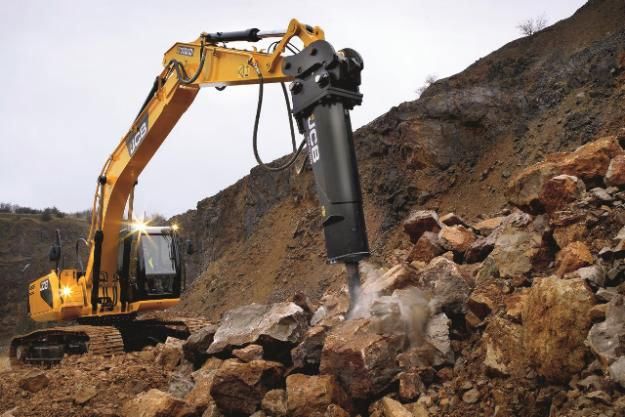Comprehensive Excavation Methods: Grasping the Basics for Success
In the realm of building and construction and civil engineering, the value of effective excavation methods can not be overemphasized. The cautious planning, exact implementation, and careful interest to detail required in excavation jobs demand a detailed strategy that incorporates various fundamental facets. From initial dirt evaluation to the application of safety and security steps and routine development monitoring, understanding these core components is crucial for accomplishing success in any excavation venture. The true mastery lies not just in recognizing these principles however in perfectly integrating them to navigate the intricacies of excavation projects with finesse.
Comprehending Excavation Job Planning

The first stage of any kind of excavation task is the planning phase, where vital decisions are made that can significantly affect the end result of the project. Comprehending the job timeline, budget, and extent restrictions is vital for creating a comprehensive excavation plan that makes sure the job's success.
One trick facet of excavation job planning is the advancement of a comprehensive timeline that describes the sequence of tasks, milestones, and target dates. By carefully taking into consideration all these variables throughout the planning phase, excavation tasks can be executed efficiently and properly, leading to successful outcomes - dump truck companies in ohio.
Soil Evaluation and Site Assessment
Performing extensive soil evaluation and site analysis is a vital action in the preparation stage of any type of excavation task. Dirt analysis includes identifying the make-up, framework, and residential or commercial properties of the soil at the excavation site. This info is vital for comprehending the soil's bearing capacity, dampness content, and capacity for erosion, which are key consider figuring out the excavation techniques and devices needed for the project.
Website analysis surpasses soil analysis and includes a wider assessment of the overall website conditions. This analysis consists of identifying any type of possible risks, such as below ground utilities, ecological problems, or unpredictable terrain, that might influence the excavation procedure. By extensively evaluating the site, project supervisors can develop efficient excavation approaches that prioritize safety and security, performance, and environmental management.
Using advanced technologies like ground-penetrating radar, soil sampling, and drone studies can enhance the precision and effectiveness of soil evaluation and website examination. Investing time and resources in these preliminary actions can inevitably save time and avoid pricey delays or issues throughout the excavation procedure.
Equipment Option and Utilization
Reliable excavation tasks rely heavily on tactical devices choice and usage to ensure optimal performance and performance. Selecting the best equipment for the task is essential in taking full advantage of performance and lessening downtime. Elements such as the sort of soil, deepness of excavation, and task scope play a considerable duty in determining one of the most suitable tools for the job at hand.

Along with picking the appropriate tools, proper utilization is essential to task success. Operators has to be trained to manage the tools safely and effectively - septic ohio. Regular maintenance checks and timely repair services assist prevent malfunctions and make sure regular performance throughout the project
Safety Measures and Laws Conformity
In the realm of excavation tasks, prioritizing precaution and conformity with guidelines is paramount to making sure a legitimately audio and safe and secure operational environment. Precaution encompass a variety of methods, consisting of conducting comprehensive site analyses, carrying out appropriate signs and barriers, and supplying ample safety training for all personnel involved in the excavation procedure. Adherence to guidelines, such as OSHA requirements in the United States, ensures that the excavation job satisfies the necessary requirements to safeguard employees, spectators, and the surrounding atmosphere.

Tracking Progression and Adjusting Methods
How can forecast supervisors effectively track the development of excavation jobs and adjust their approaches appropriately to enhance results? Monitoring development is vital for guaranteeing that excavation tasks remain on track and excavating ohio satisfy target dates.
Verdict
In final thought, grasping the fundamentals of detailed excavation strategies is essential for the success of any kind of project. By comprehending task planning, assessing soil and site problems, selecting appropriate devices, complying with security laws, and keeping track of development, job supervisors can guarantee a smooth and reliable excavation procedure. Carrying out these methods will cause effective outcomes and decrease possible threats or obstacles throughout the excavation project.
The initial phase of any type of excavation task is the planning stage, where vital choices are made that can considerably influence the result of the task. Understanding the project spending plan, timeline, and extent constraints is crucial for developing an extensive excavation plan that ensures the project's success.
Just how can project supervisors effectively track the development of excavation jobs and adjust their methods as necessary to optimize outcomes? By carefully checking development and being willing to adapt techniques, task managers can improve the overall success of excavation jobs.
By recognizing job planning, evaluating soil and website problems, picking appropriate tools, complying with safety and security laws, and keeping track of progress, project managers can ensure a efficient and smooth excavation procedure.